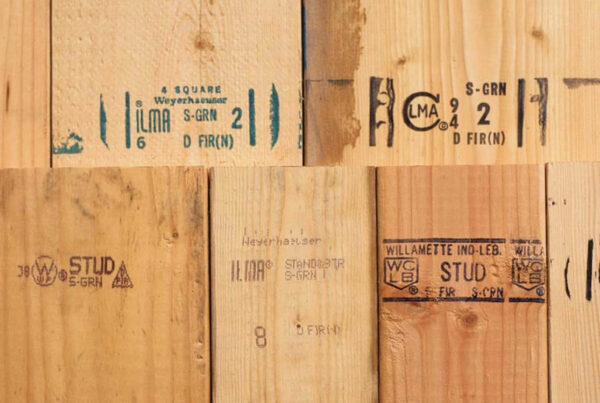The strength of glulam (glue-laminated timber) products gives it its construction capabilities. Environmentally conscious builders and homeowners would choose to consider these products. Combining wood, lower grade logs, veneers, and other elements creates powerful structural members. This is very useful in applications such as headers and studs, joists, girders, and columns. Bonding several laminated layers to develop glulam products produces structural supports. These supports have varying depths, lengths, and curvature. This prevents the unnecessary destruction of natural forests. Below are some of the importance of engineered wood.
1. Contributing to the Welfare of the Planet
Many builders and homeowners make responsible choices of construction materials. This gives them a role in actively participating in protecting the planet. The development of sustainable construction materials such as glulam promotes environmental efficiency. As a result, it delivers a superior product.
The layers of laminates prevent the reduction of the strength of natural wood. This helps to produce materials that have more strength than solid timber.
The manufacturing process offers access to creative and innovative building concepts. These concepts need “larger and longer members” than traditional timber can provide. The decision to use sustainable building materials positively affects the environment.
2. Creating Versatile Plywood
Plywood is widely regarded as the first ‘engineered wood’. Moreover, Its layers of veneers created a usable product that provides strength and stiffness.
The general idea behind larger glulam members and beams is the same as plywood. Though it creates an engineered product that improves on plywood. It achieves this by bonding larger pieces end-to-end to form a highly durable, face-bonded straight or curved construction material.
The Engineered Wood Association (EWA) honors the American Plywood Association by continuing to use APA as part of its ID. Douglas Fir Plywood developed a technology in the 1920s. This technology made the product an essential construction element for door panels and automobile running boards
World War II produced a demand for plywood barracks, PT boats, gliders, assault boats, and lifeboats. After the war, a booming economy relied on the industry to produce 4 billion square feet of plywood by 1954.
The Douglas Fir Plywood company later became the APA to reflect its acceptance. A similar transition allows APA to inform builders and homeowners of the line of building materials on the market today.
3. Advancing to Complex Engineered Wood Products
Glue laminating got a start in Europe at the end of the 19th century. This was at a time when a Swiss patent introduced glued laminated timber for construction purposes.
The development of a water-resistant adhesive led to a publication of manufacturing standards. This adhesive protected glulam from the elements. The entrance of glulam into the market signaled the availability of improved performance. Moreover, there were better design values for homes and commercial projects.
Homes achieve benefits from simple materials such as headers and beams. The architectural feats of domed roofs incorporate remarkable innovations. The several classifications of glulam offer choices for any project. The product makes vaulted designs possible in churches, public buildings, and homes with open spaces.
Its strength and versatility make it perform well in many applications. Such applications may include garage door headers, purlins, floor, ridge, and cantilevered beams. Also, in commercial projects, contractors use glulam for flat roofs and complicated expansive arches. Its green qualities of low formaldehyde levels and reduced weight decreases transportation costs. This, therefore, counts as an importance of engineered wood.
4. I-Joists
Builders use I-joists in the residential roof and floor construction. This is due to their ability to cover long or short spans. Their straight characteristic allows builders to achieve a level framing surface. They perform well in commercial applications involving long spans or heavy loads.
These spans and loads get greater performance from straight or curved beams, radial or Tudor arches, and pitched or curved beams. The Construction Specifier points to some features of I-joists which make them suited for their “greater dimensional consistency”.
Glulam can exist in lengths of more than 50 feet and thicknesses up to 3.5 inches for individual pieces. This enables manufacturers to produce thicker beams. As a result, they span longer distances and support heavier loads by bonding them. From an environmental standpoint, builders and homeowners can appreciate the benefits I-joists. The most effective is the one with less wood fiber than solid sawn lumber. The difference amounts to 36 percent for 16-inch on-center spacing and 46 percent for 19.2 inches on center.
5. Rim Board
Rim board is a construction element that provides an essential function around the perimeter of a house. It makes its presence known only during the building phase. APA describes it as a structural component that fills the space between the top and bottom plates of wall sections.
This is common especially in homes that have two floors. For single-floor homes, it fills in the space between the sill and bottom plate. It provides the attachment point for floor joists and without it, an open space exists. This would as a result allow moisture and debris to accumulate within the structure.
The strength, precision, and reliability of the APA rim board allow it to provide a fit between the floor and the foundation. In most cases, this would match the depth of the companion wood I-joist.
It, therefore, offers an advantage over traditional solid sawn lumber. The traditional lumber becomes impractical by not matching the size of the I-joists. These are just but some of the importances of engineered wood products.










